What Is Rest Attack?
We’ve all heard of rest defence.
While it dominates conversations on tactics, and there are many pieces of analysis on the topic, the inverse is less readily available.
Rest attack finally gets its spot in the limelight.
This tactical analysis looks at the other side of the ball.
We want to look at the principles of a strong rest attack; in other words, how do teams situate themselves to enhance the efficiency of their counterattacks?
We’ll start this tactical theory piece with a general look at our starting ground: how teams organise their press.
We’ll then connect rest attack to the opposition and how to find gaps in their rest defence.
Finally, the conversation turns to finding outlet passes.
Ultimately, this analysis will lay out a holistic approach to rest attack.
Setting up the defence
Any conversation about rest attack naturally starts with the defensive setup.
Just as rest defence is the attacking structure that lends itself to defensive transitions, rest attack puts the defensive tactics in relation to attacking transitions.
In other words, it’s defending with attacking in mind.
There are a couple of ways to go about the topic, such as the use of pressing traps to create transitional moments or how a team funnels play into specific spaces before engaging.
That latter point connects to the positioning of outlets to initiate the counterattacking sequence.
Since we’re not looking specifically at a single club’s philosophy, will use this analysis as a brief survey on rest attack examples within different presses.
Starting with a high press, the example below shows Värnamo tightly connected centrally while also cutting off any passes into the wings through the first two players in the press.
This is an excellent example of a pressing trap.
With the wings cut off and a little more than a rushed clearance available for the goalkeeper, Värnamo initially presents the defensive midfielder as an option to play out.
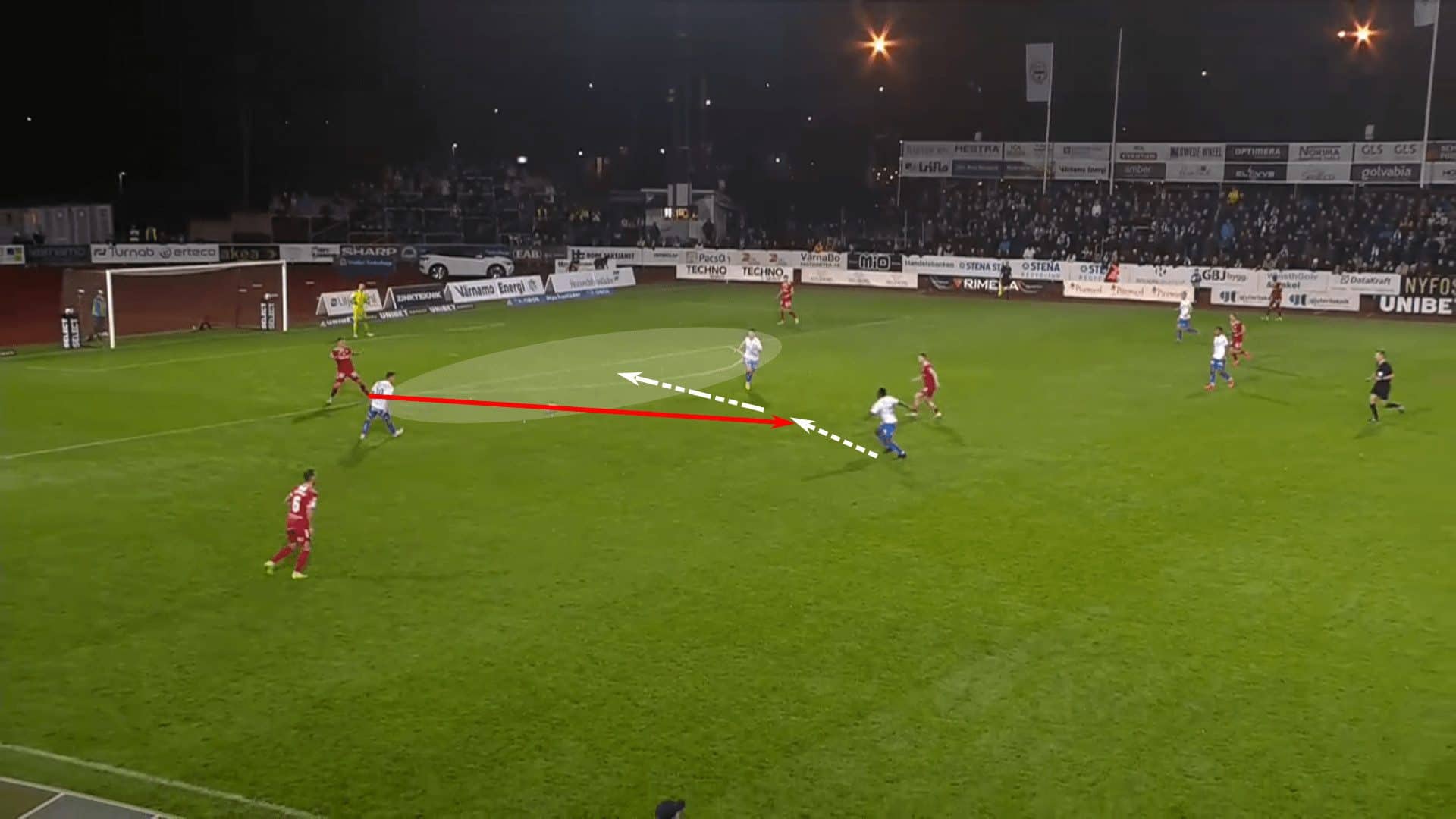
But it is a trap.
Once the pass is played in, it’s quickly read and the ball stolen, leading to a shot against an expansive opponent.
In the mid-block, we have an example of Napoli heavily concentrated in the centre of the pitch with a 4-4-2 setup.
With Juventus’ central players occupied, Napoli is communicating that playing around the press is the only way to beat them.
Rather than playing around through the right centre-back, Giorgio Chiellini tries to skip a player and has his pass intercepted.
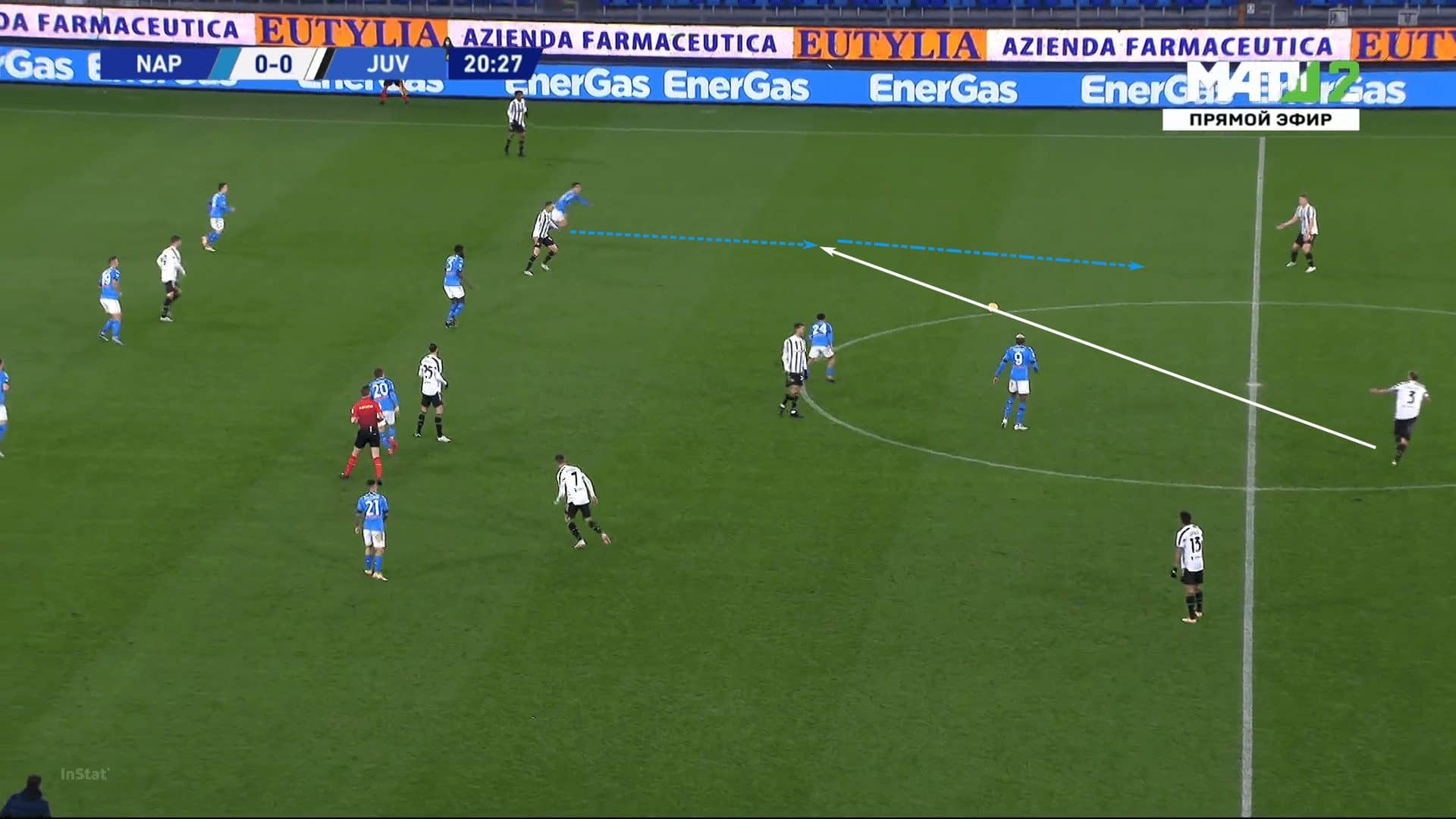
Though Juventus has enough numbers back to defend against the counterattack, Napoli has two players positioned high and lots of space in front of the first attacker.
They can use the two forwards to stretch the backline, both vertically and horizontally.
Finally, looking at the low block, Our example comes from El Clásico.
Real Madrid is defending deep in their end against an overly aggressive Barcelona team.
Madrid’s two lines of four are well positioned, preventing Barcelona from earning a box entry.
In response, Barcelona pushes additional players forward, hoping to unlock the low block.
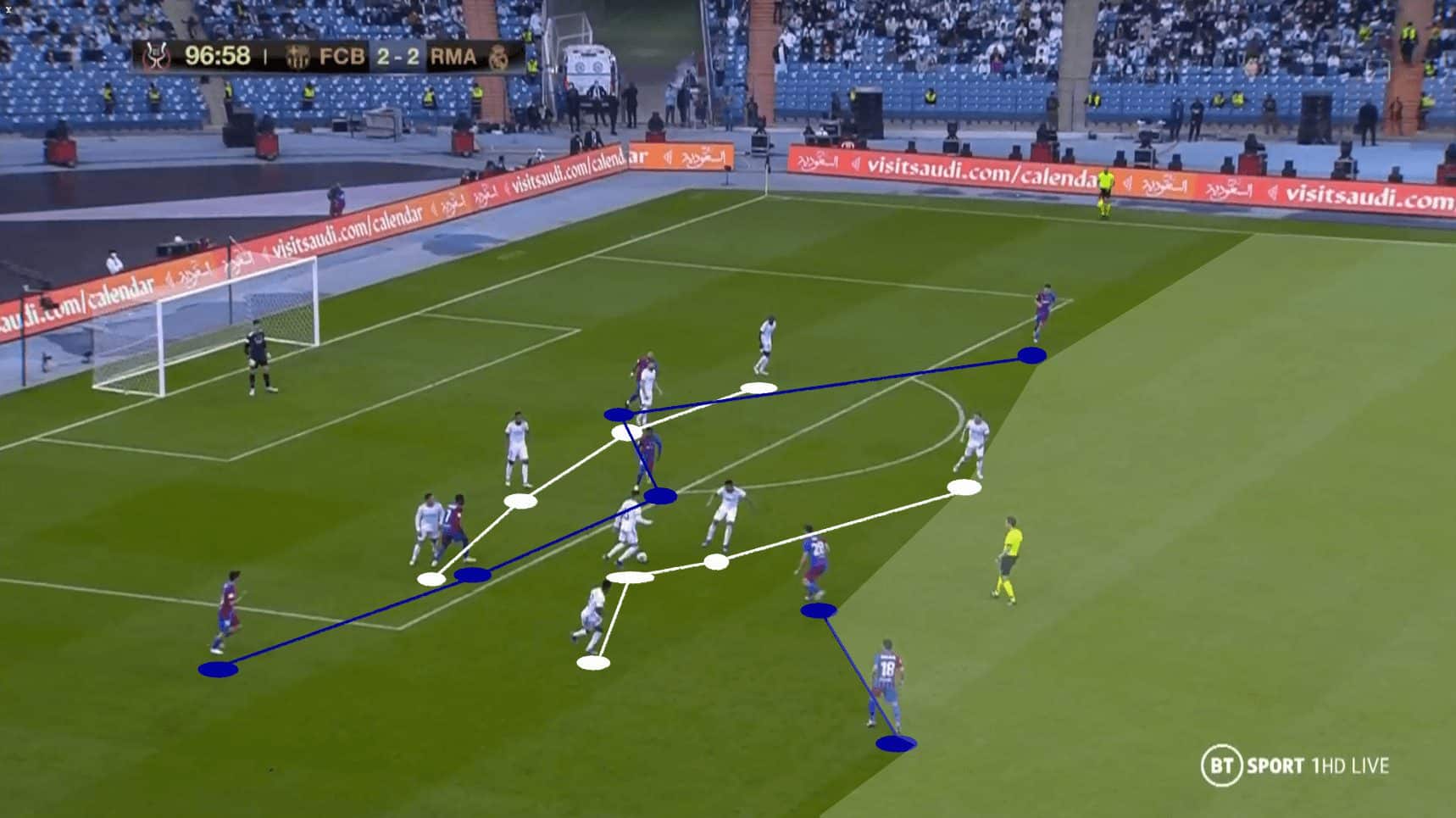
But once the ball is turned over, Real Madrid has loads of space to attack.
The first image of the sequence shows the space behind the midfield, but the second, below, shows the outcome higher up the pitch.
Real Madrid has a 5v2 advantage with one Barcelona player in position to join the defensive effort.
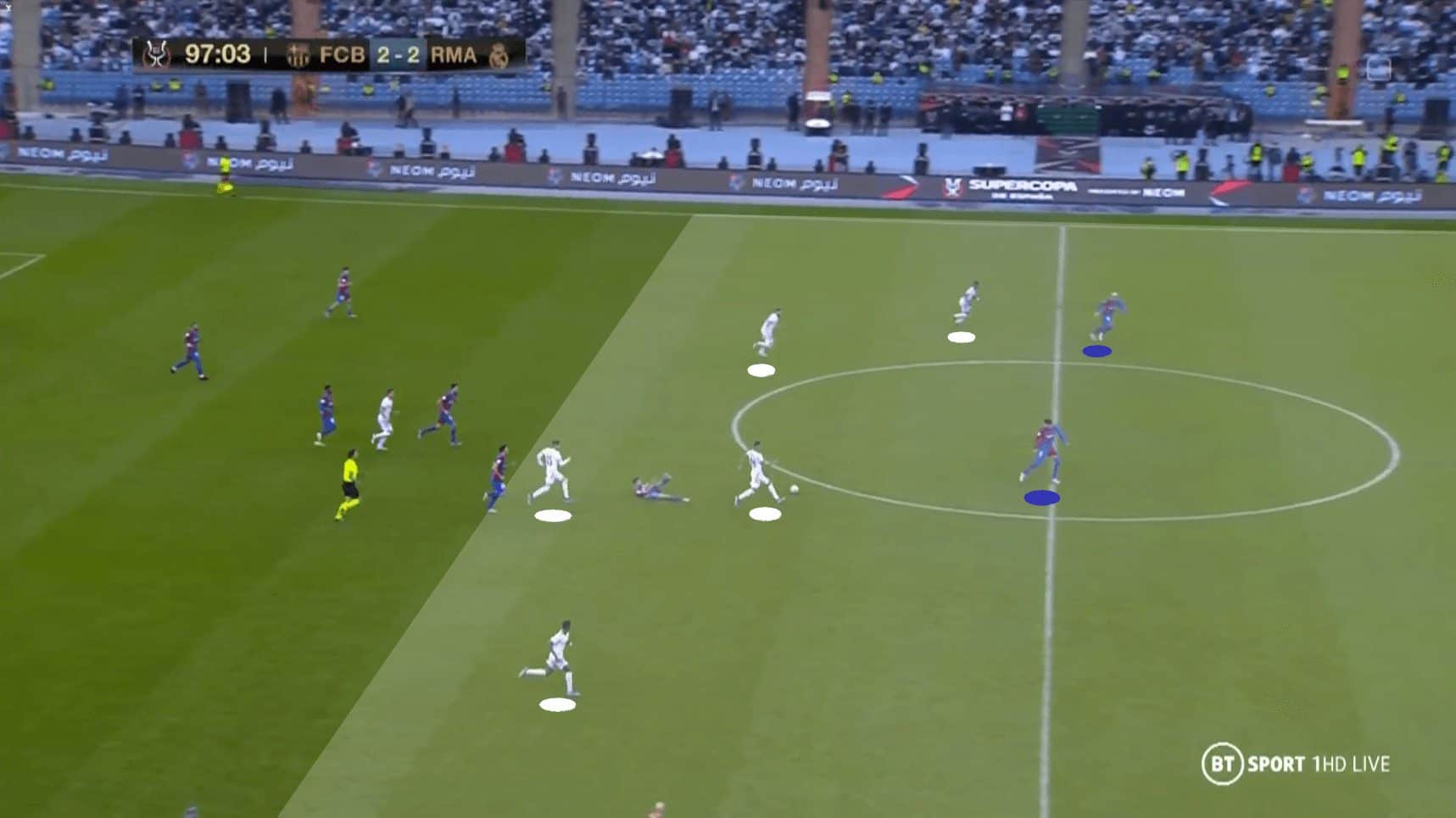
First and foremost, a team’s defensive setup is designed to prevent the opposition from scoring or creating quality opportunities on goal.
Secondarily, and this is where we see the holistic connection within the game, defending efforts are designed to generate scoring opportunities in the other direction.
Those opportunities may or may not come depending on where the ball is won, the ability of the opponent to recover their shape, or how the defensive structure had to adapt to earn the recovery.
Counterattacking opportunities aren’t always available, but a strong rest attack increases the likelihood of a direct attacking move for the recovering team.
Knowing the gaps in the opposition’s rest defence
Next comes a conversation on the resting shapes of the two teams.
On the one hand, we have, the more popular sibling, rest defence.
On the other, we have rest attack.
This is a positional battle to determine superiority within the playing area—pitch control factors into this conversation.
For the defending team, connecting a positional superiority within the vicinity of the ball to vulnerabilities within the opponent’s attacking shape is the point of emphasis.
Especially in the era of positional play, teams that are struggling to unlock the defence and make progress up the pitch are likely to pull additional numbers forward, sacrificing their rest defence stability for the sake of progression.
As long as the defensive team can withstand the increased attacking intensity, this is the perfect scenario to turn a recovery into a counterattack.
Take the example below.
Once the ball is won, the first pass is played forward to the high central target.
While the defending team has tunnel vision on the ball, the attacking team prioritises getting behind the opposition’s outside-backs.
There’s loads of space in that shaded area to drive forward and get into the opposition’s half.
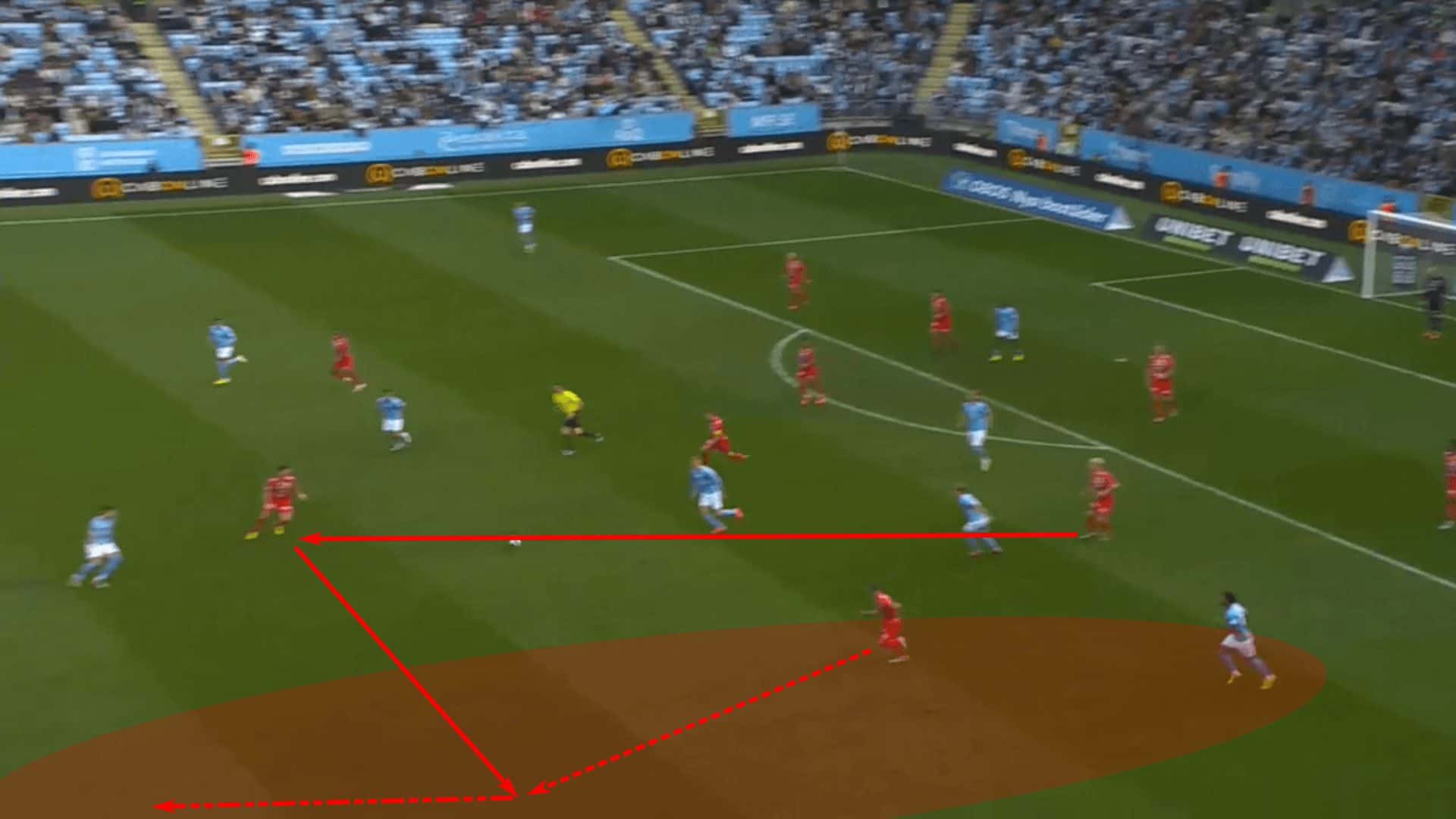
It’s those types of vulnerabilities that a strong rest attack is prepared to target.
Our next example comes from Chelsea versus Liverpool.
The scenario comes from the “play in behind Trent Alexander-Arnold” conversation timeline.
In this sequence, that’s exactly where Chelsea directs their attention.
Once the ball is won and Liverpool gets caught with too many numbers in front of the ball, the first pass is played into midfield, and the side immediately looks to get behind the right-back.
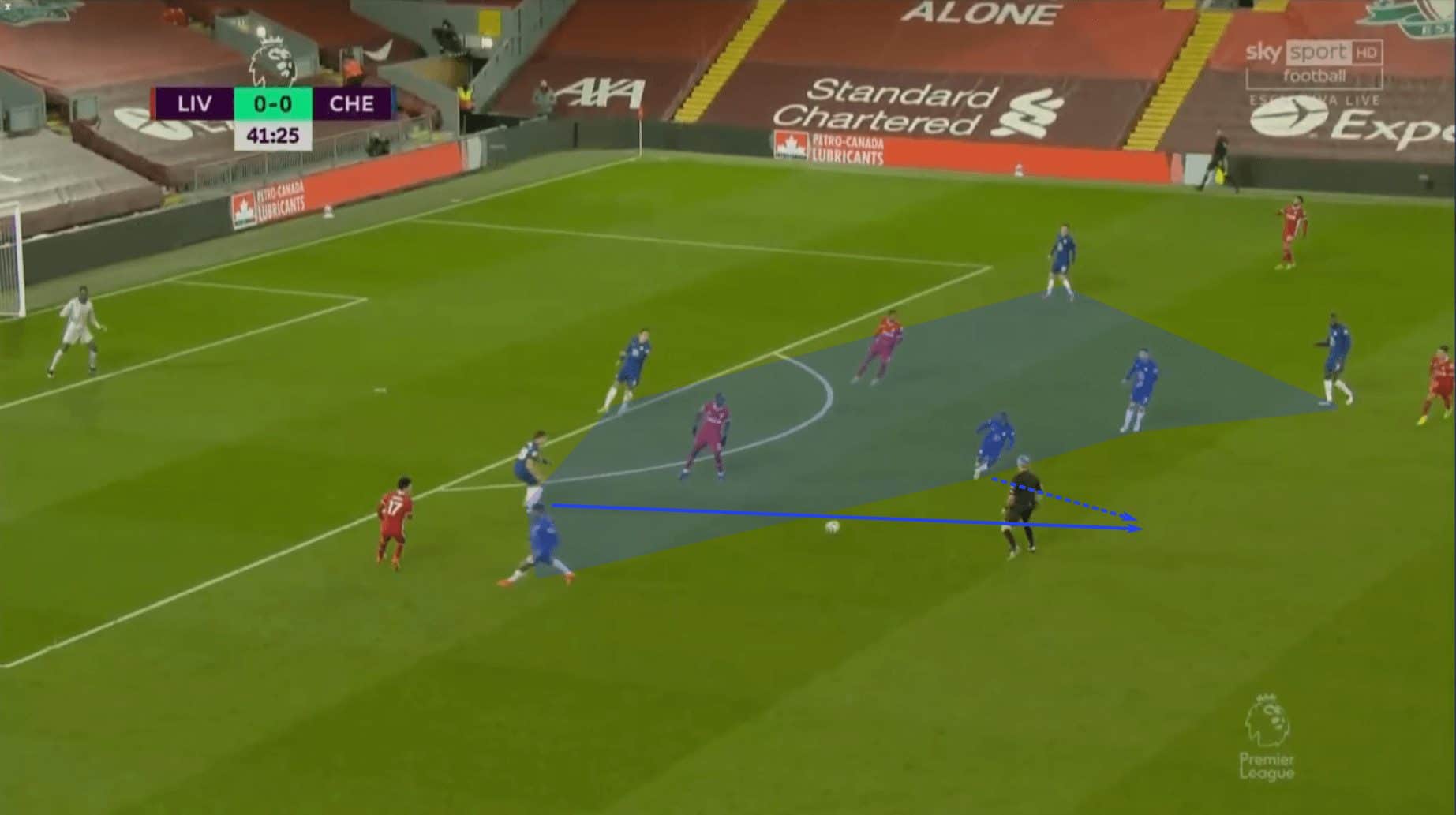
They have succeeded in getting behind him and into the box.
With a strong idea of the opponent’s vulnerability along the backline, Chelsea was able to move from their box to the opposition’s with minimal time and passes.
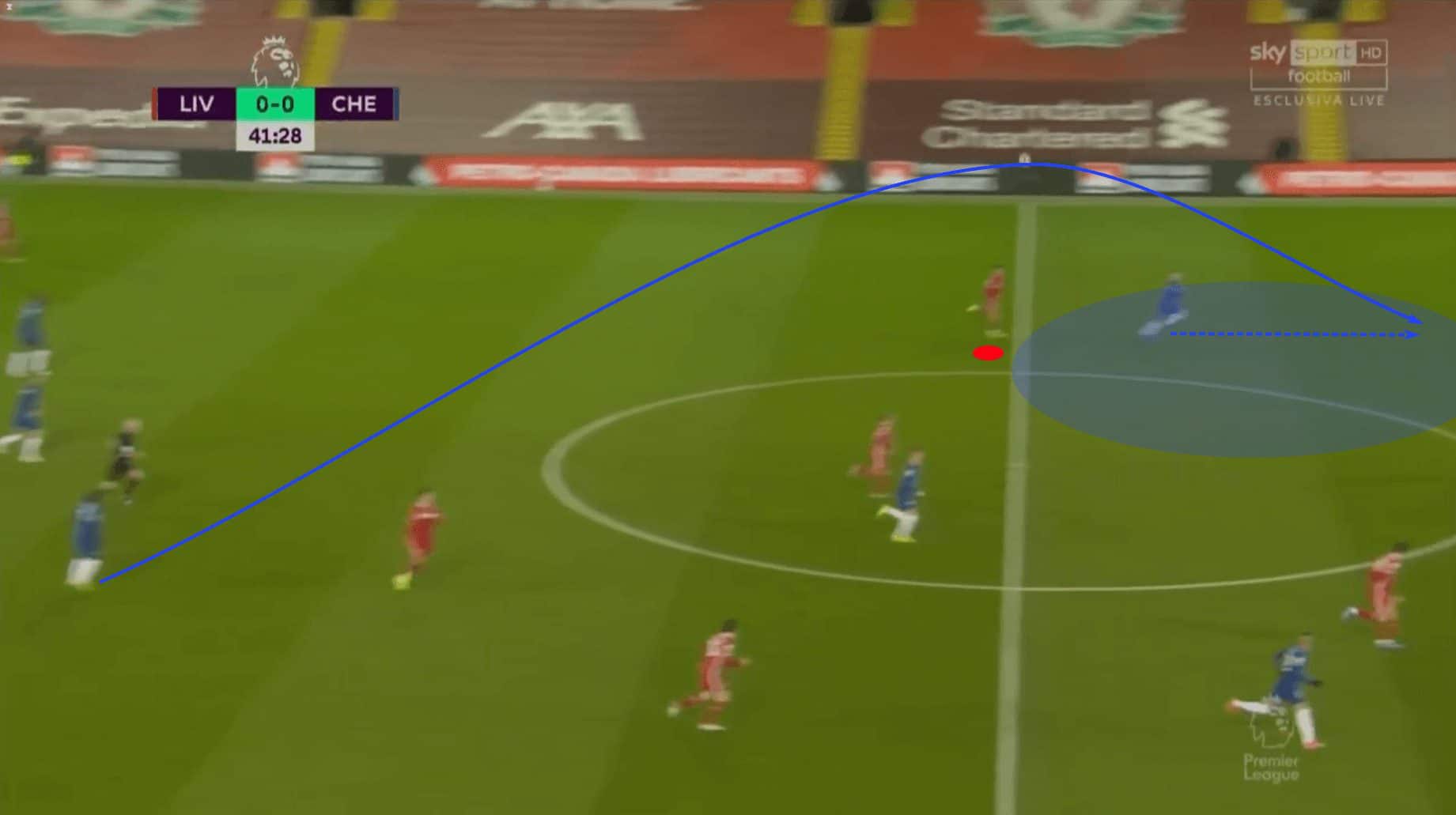
Perhaps the most obvious advantage of a strong rest attack is the relation between the two shapes.
The attacking team is typically more expensive, aiming to maximise the playing area to stretch the opposition’s lines horizontally and vertically.
For the defending team, the idea is to stay tightly connected to complicate the opponent’s path to goal and funnel them into preferred areas or to specific players before applying pressure on the ball.
When the press is well executed and generates a recovery, the attacking and defending shapes often look like the one below.
Once the defending team recovers the ball, they’re tightly connected and dominant near the ball.
In this case, the recovery comes centrally, meaning Värnamo has the ball and numbers in the central channel.
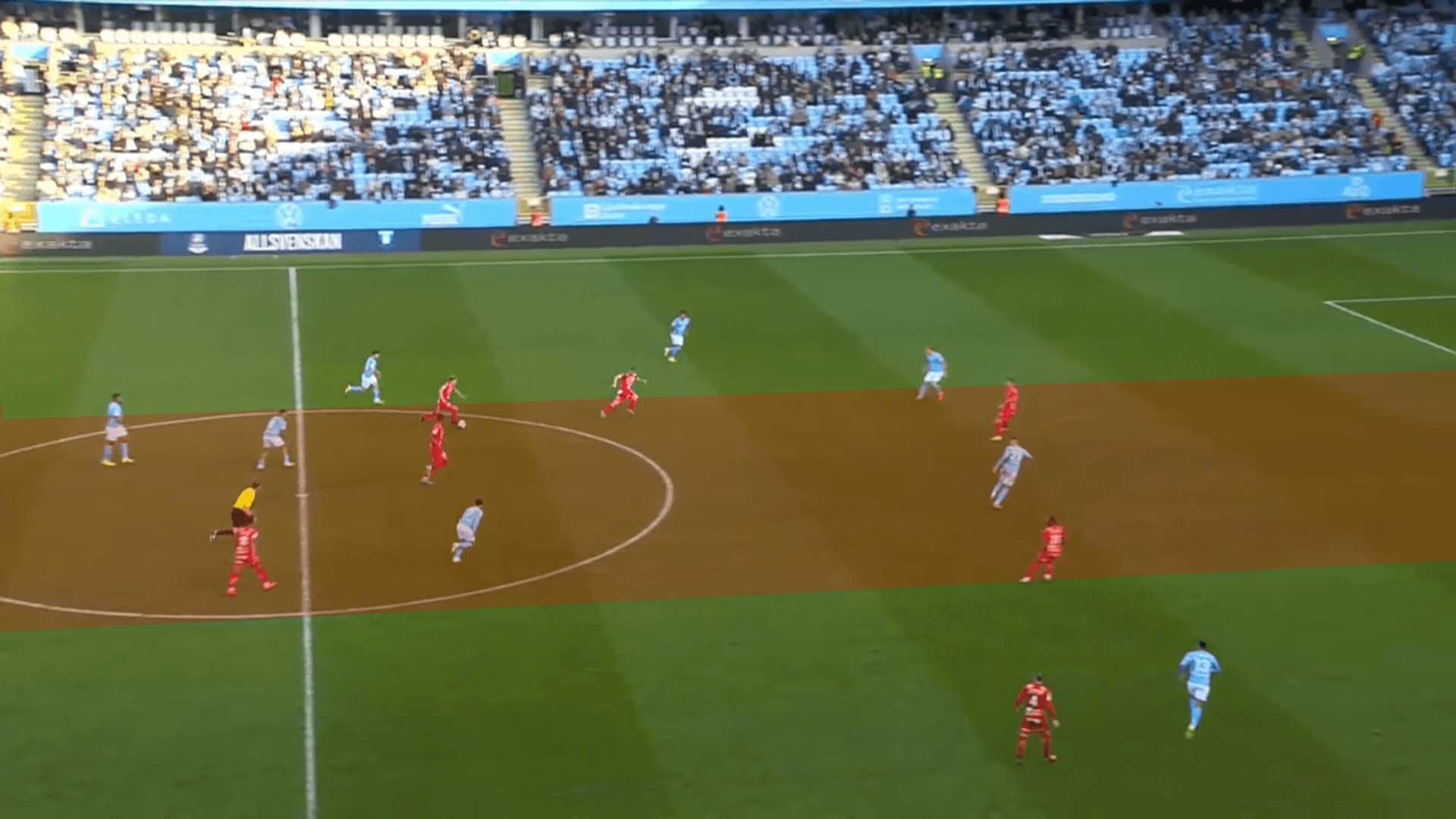
The counterattack gives them numeric and positional superiorities.
This is an ideal time to increase the attacking tempo and stay on as straight a line as possible to attack the goal.
Each club may have a base set of tactics for the press in each defensive phase.
Their success in transition will largely relate to small adaptations that connect the way they press to the vulnerabilities presented by a specific opponent.
This is where a manager’s match tactics help or hurt the team.
The more readily and fluidly a team can transition from their defensive shape to an attacking move that exploits an opponent’s vulnerabilities, the more success the team is likely to experience.
Finding the outlets
Once the opposition’s weaknesses are identified, the next step is situating players to find their outlets.
Again, this is an area that varies from game to game.
It’s the relation of the team’s game model to that of the opposition.
The ability to adapt one to the other is tactics in a nutshell.
As the opposition analysis takes place, it’s the coaching staff’s responsibility to find areas of weakness in the opposition and figure out how to direct players to take advantage of those momentary opportunities.
Once the opportunity is identified, the next step is to make slight adaptations to the press.
The objective here is to have options to play forward and get numbers into the box, ideally with numeric and positional superiorities in place.
This is also where we see some differentiation in each team’s game model.
For example, in the image below, Espanyol looks to find the high target and then sets the ball into the supporting runner underneath.
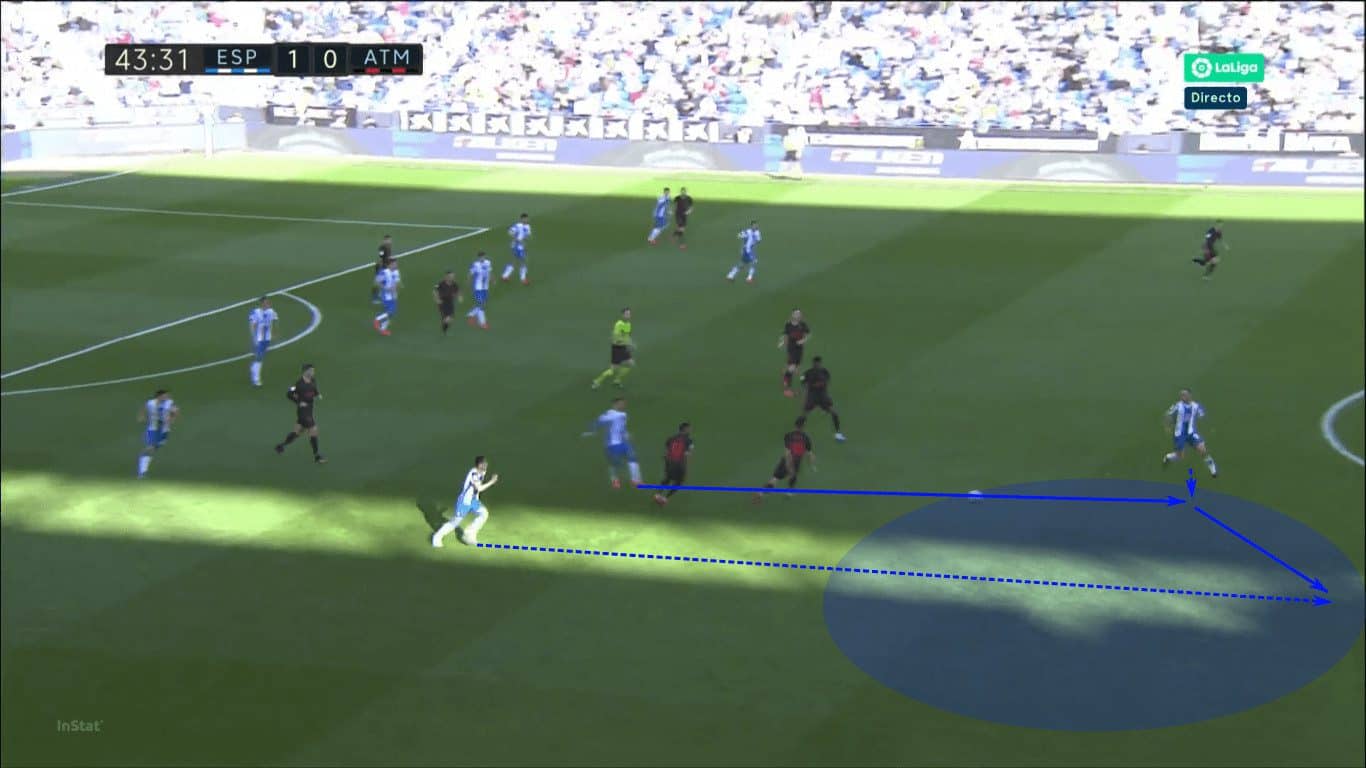
One of the benefits of an up-back-forward pattern is that the defence will initially follow the path of the ball.
That creates space for supporting runners to move higher while untracked.
If they can receive the ball with those untracked runs, there’s typically space for them to dribble into.
Plus, with the ball now moving from one vertical line to another, there’s an opportunity for another third-man run, typically to join the front line and ideally with limited opposition in the way.
For some teams, like Portugal in this next sequence, their technical quality allows them to rely on network connectivity where the ball is won.
In this case, they have a 4v2 centrally when the ball is won, using quick combination play to break the first wave of the counterpress and have a run at the backline.
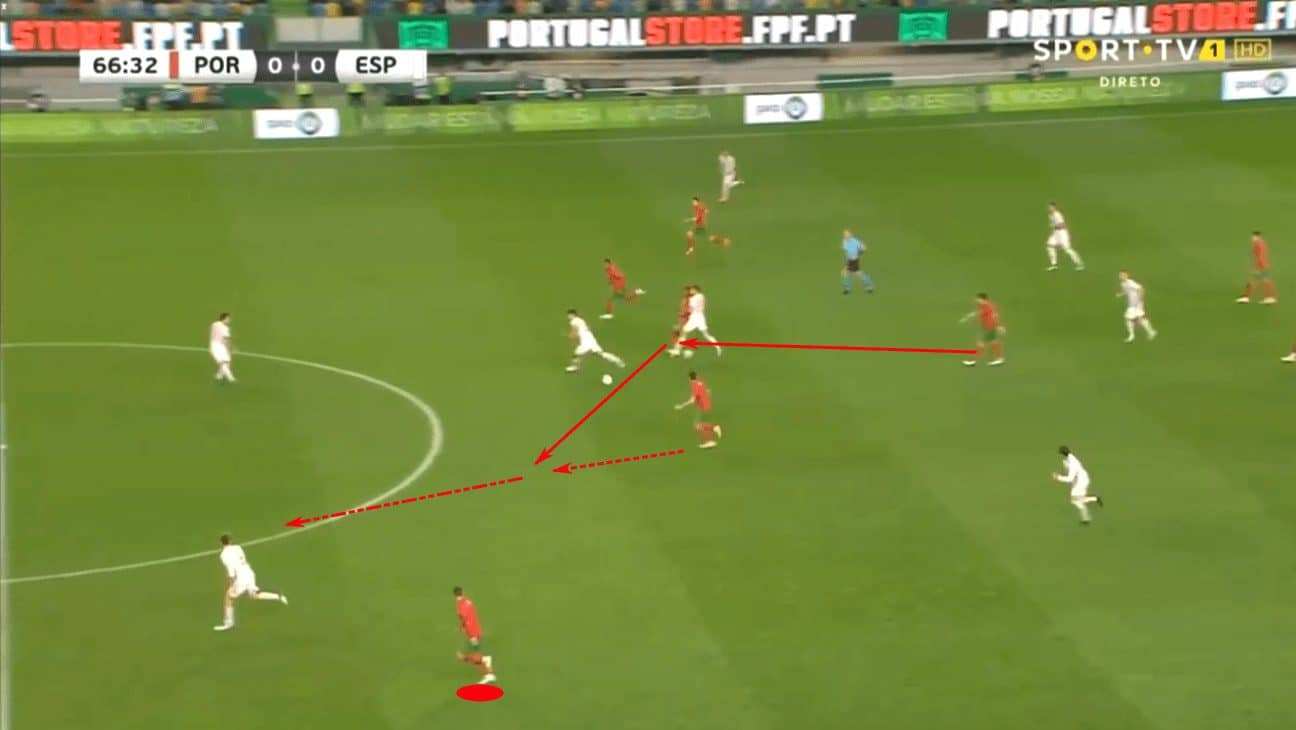
With Portugal in possession of the ball centrally and Spain with limited numbers to delay the counterattack, notice the wide presence of Cristiano Ronaldo.
His wide positioning forces the defender into one of two options.
He either slides centrally to contest the immediate threat or slightly into the right half space to protect against a pass to Ronaldo.
The obvious answer here is to remain central, meaning the pass to Ronaldo is the next logical step for Portugal.
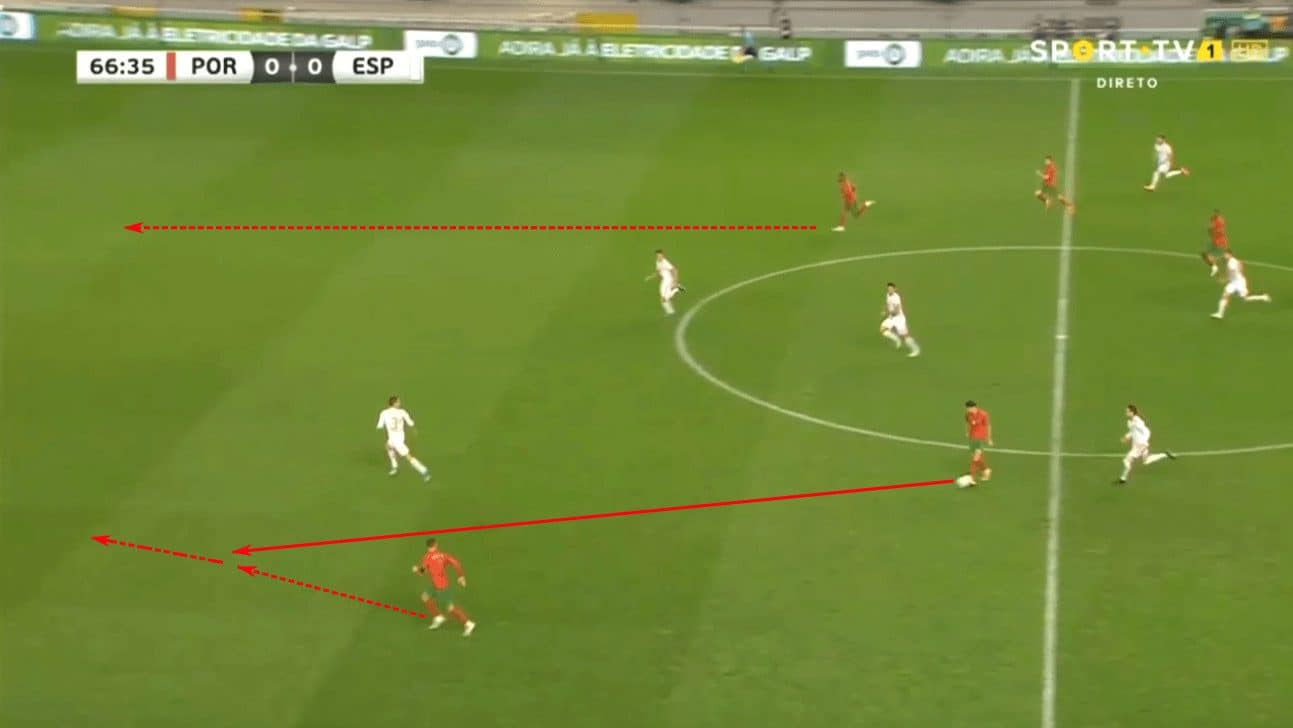
Remember that Portugal is still benefiting from their rest attack shape.
They are well connected, centrally and have a numbers advantage over Spain.
They are well prepared to attack the box.
Ronaldo has the option to cut inside and take a shot or lay the ball off to an oncoming teammate.
In this case, he bends a brilliant pass into the box to the 3rd man for a Portuguese goal.
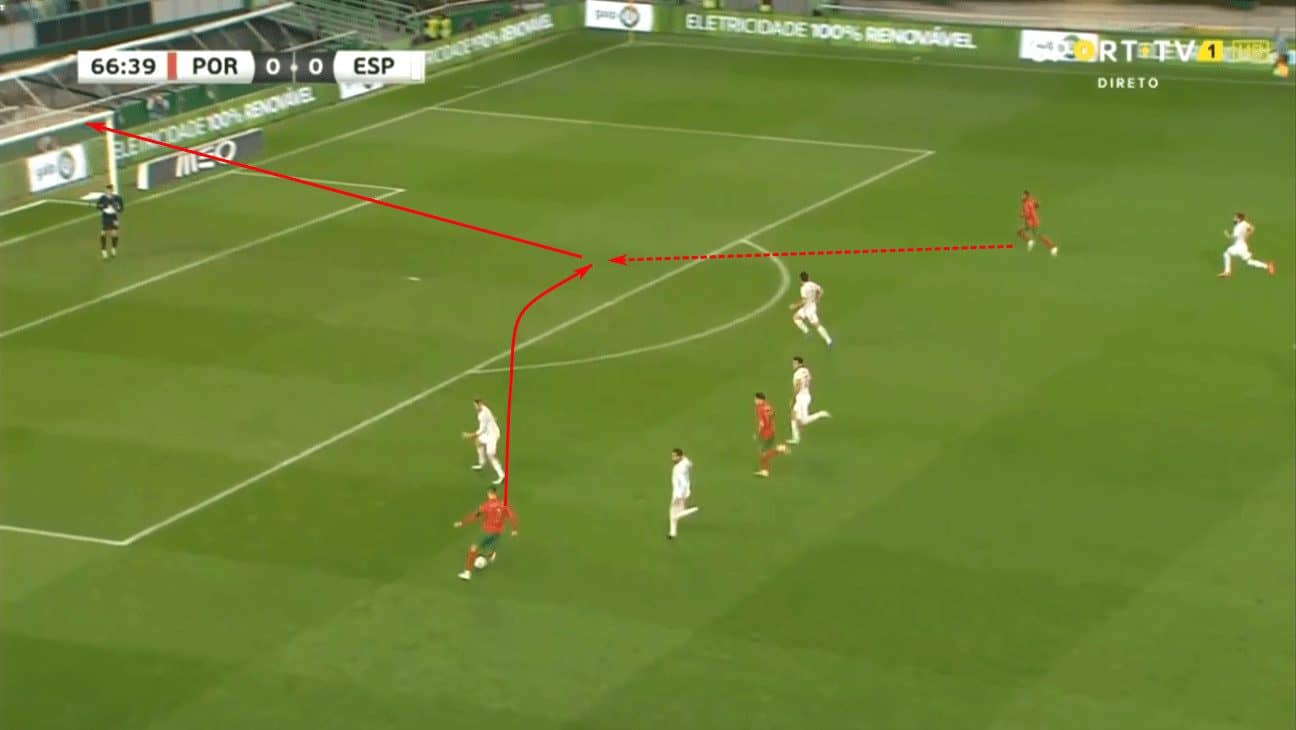
The position of the outlet players connects to the vulnerabilities observed in the opposition’s style of play and the way the team sets up defensively.
It’s all connected.
Conclusion
The terms rest defence and rest attack are newer additions to football nomenclature.
Though some may criticise the introduction of these terms as pointing out the obvious or putting technical terms on common ideas, there’s tremendous value in having a conversation on tactics with these terms.
Not only do they incorporate realities on the pitch and give names to ideas, but they also interweave the phases of play.
Moving from defensive blocks to attacking transitions is inevitable in the game, but introducing the term rest attack leads to a deeper conversation on the relation of one to the other.
It reinforces the idea that even when we are defending, we do so in order to attack once again.
Even the very term rest attack implies a holistic view of the game and cohesive organisation of a team’s tactics.
It’s the lesser discussed of the two rest terms, but rest attack deserves a spot at the table, too.





Comments